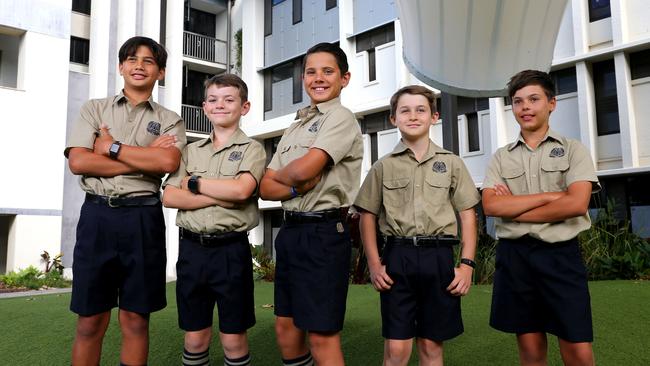Queensland’s cashed-up, cash-strapped schools revealed
Some Queensland schools are raking in hundreds of millions of dollars while others are left operating on a pittance. SEE HOW YOUR CHILD’S SCHOOL COMPARES
Schools Hub
Don't miss out on the headlines from Schools Hub. Followed categories will be added to My News.
HISTORIC Brisbane boys schools have emerged as the big winners in an exclusive analysis by The Courier-Mail to uncover Queensland’s richest schools.
The most recent financial data from MySchool has revealed the high-performing Brisbane Grammar School is the wealthiest in the state, with a combined 2015, 2016 and 2017 gross income of more than $158 million.
In 2017, that equated to about $33,000 per student.
SCROLL DOWN TO SEARCH THE INTERACTIVE FOR YOUR SCHOOL

Of the Top 10 wealthiest schools in Queensland, seven were private boys schools.
They also included Anglican Church Grammar School – which raked in more than $151 million in the same period – St Peters Lutheran College ($145 million), St Joseph’s Nudgee College ($121 million), Brisbane Boys’ College ($120 million), St Joseph’s College Gregory Terrace ($117 million) and The Southport School ($116 million).
All Hallows’ School and Brisbane Girls’ Grammar School also made the top ten, with gross incomes of $128 million and $126 million respectively.
Far North Queensland’s Tagai State College rounded out the top 10 with $115 million in gross income, predominantly thanks to its need for significant government investment due to its highly-unique nature.
The school, which has more than 1500 students, comprises of 17 distinct campuses across the islands of the Torres Strait.
The MySchool data captured a range of different income sources for schools, including both federal and state funding, grants, tuition fees, other parental contributions, donations and P&C funding.
Independent Schools Queensland executive director David Robertson said independent schools directly and indirectly contribute more than $5 billion to the Queensland economy and support about 35,000 jobs.
He said parents were often willing to sacrifice other areas of their lives for their child’s education and send them to their preferred schools, with tuition fees accounting for large chunks of private schools’ income.

“While the ratio of income sources for schools varies depending on the socio-economic needs profile of their communities, on average across the sector parents are the single biggest contributors, meeting about 50 percent of school running costs with governments providing the balance,” he said.
But at the major high-tuition fee schools, parents account for up to 80 per cent of a school’s income.
Mr Roberston said for most schools, their biggest expense was staff wages.
“Maintaining school infrastructure, including technology equipment and services, is also costly,” he said.
Nudgee College principal Peter Fullagar said the school was one of the oldest continuing Catholic boys’ boarding schools in the country, having been founded in 1891.
Over the past five years the college had completed several multi-million dollar projects including the refurbishment and extension of its Bathersby Boarding Village, which can house up to 300 boarders.
“Largely, the funding for projects comes from a combination of the College’s Building Fund, which current families contribute to annually, as well as from accumulated funds and bank borrowings,” Mr Fullagar said.
The schools with the lowest recorded income were largely comprised of small state schools of less than 10 students, and recorded higher than average levels of income per student.
These included Ropeley State School, with a combined gross income over 2015, 2016 and 2017 of $855,069, Arcadia Valley School ($886,381) and Grosmont State School ($930,071).
A spokeswoman for the Department of Education said there were over 100 one-teacher schools in rural and remote areas.
“Smaller schools typically show a higher per student cost than larger schools with greater economies of scale,” she said.
“The department is committed to providing quality education opportunities right across our vast state.”


